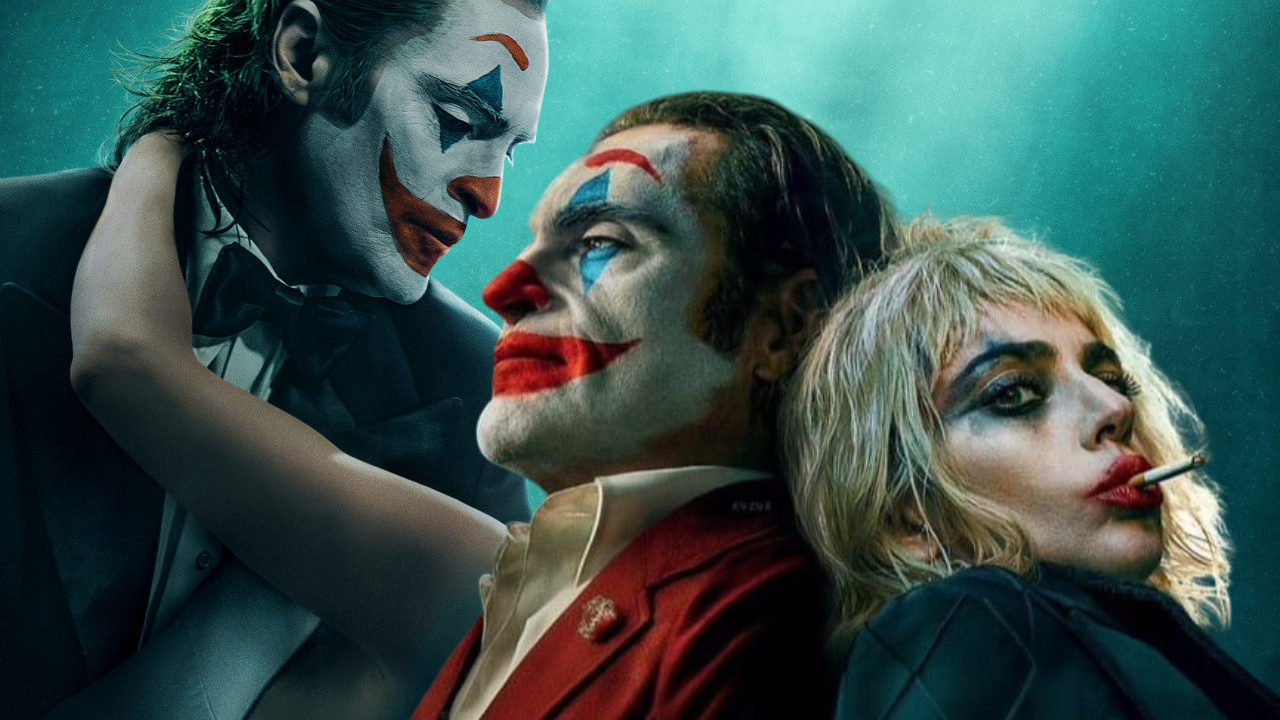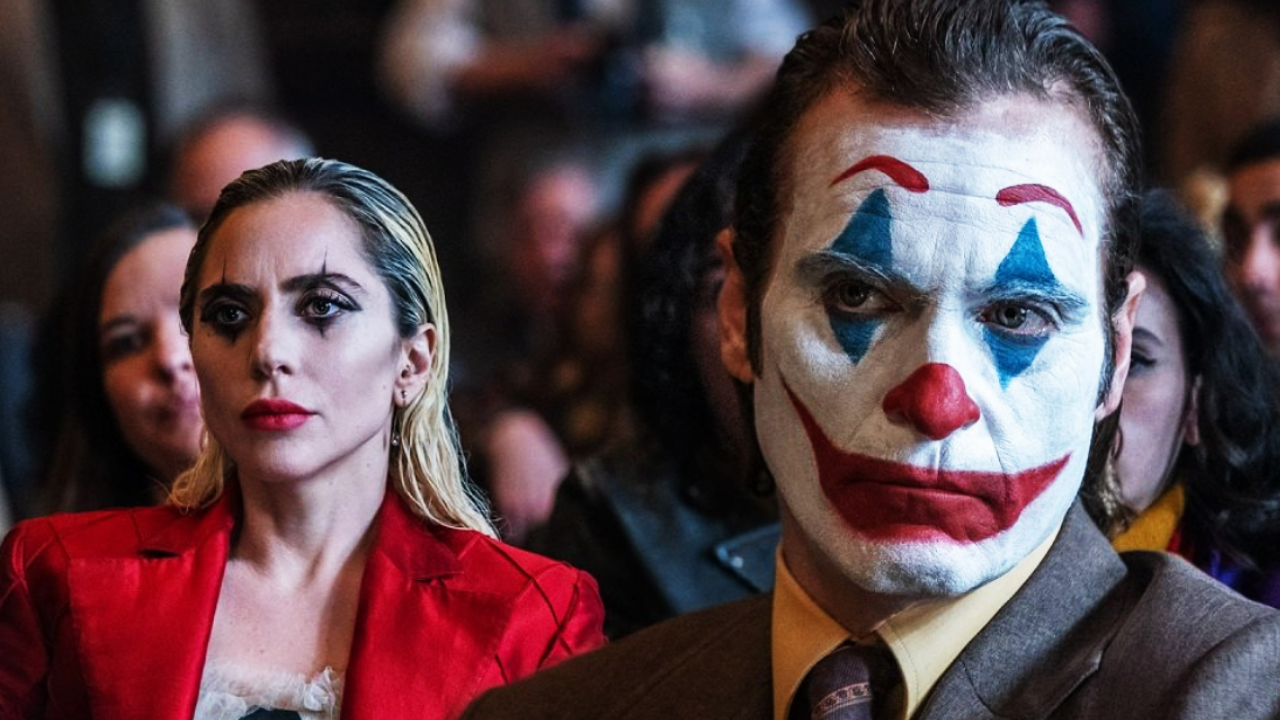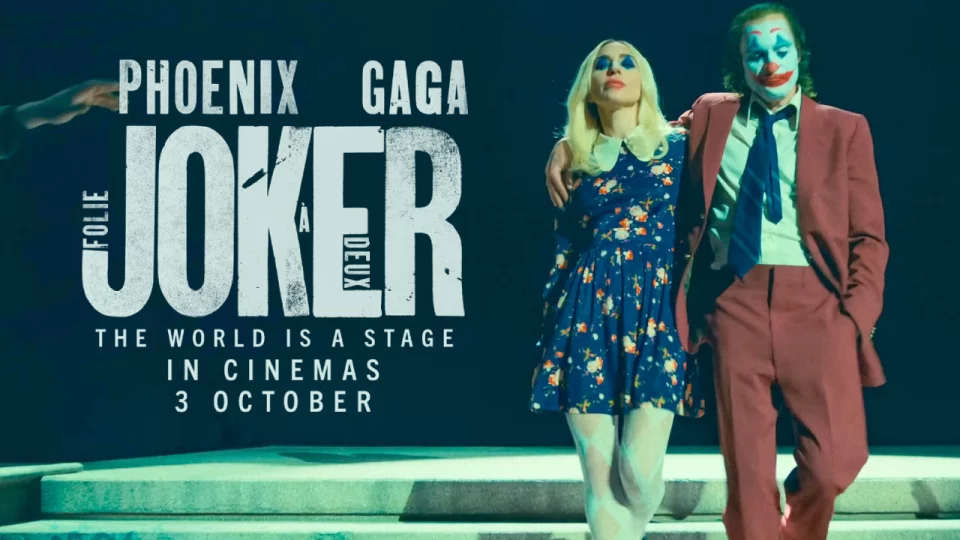The challenge of making a sequel often lies in the balance between capturing the magic of the original while presenting something new and meaningful. This delicate act becomes even more treacherous when the original film was not just a blockbuster but also a cultural phenomenon, as was the case with Todd Phillips’ 2019 film, Joker.
Despite its polarizing reception, Joker was lauded for Joaquin Phoenix’s powerful performance and its grim portrayal of society’s brokenness. Naturally, a sequel would carry the weight of these expectations and the challenge of justifying its existence beyond box-office motivations.
The result is Joker: Folie à Deux, a musical follow-up that strives for introspection but finds itself discordant and scattered.
Table of Contents
The Fallout of Folk Hero Worship
Joker: Folie à Deux picks up the story of Arthur Fleck two years after his infamous transformation into the Joker, now an inmate of Arkham Asylum. The Arthur we find here is even more fragile than the one we met in the original movie. He has become a hollow shell after the abuse he’s endured while imprisoned and the looming threat of his potential execution. His past acts have made him a figure of fascination—a reluctant folk hero to some and a monstrous villain to others. But it’s in Arthur’s struggle to reconcile his own confusion about his identity that Folie à Deux attempts to dissect the psychology of villain worship and the unintended consequences of hero-making.
What Phillips does effectively here is turn the camera away from a celebration of the Joker’s defiance and turn it toward a more critical analysis of what happens when such defiance is celebrated without understanding its true cost. In Joker, Arthur’s transformation was marked by a twisted sense of empowerment—a personal reclamation of agency through violence. This made him, in a perverse way, a symbol for people feeling downtrodden by a system that didn’t seem to care. Folie à Deux wants to dismantle that image, showing Arthur not as an emblem of revolution but as a man trapped by the consequences of his own actions.
The central premise is Arthur’s grappling with the ramifications of having become an icon, an involuntary spokesperson for people he neither understands nor necessarily represents. Phillips makes this point early on in the film with an animated opening sequence set to “Me and My Shadow,” humorously recounting Arthur’s infamous talk show murder. The choice of an upbeat, nostalgic song to accompany an otherwise violent recollection underscores the dissonance between the mythology of the Joker and the grim reality of his actions—a recurring theme throughout Folie à Deux.
Harley Quinn and the Complexity of Connection
The sequel also introduces Harleen “Lee” Quinzel, portrayed by Lady Gaga, as a pivotal figure in Arthur’s life. Unlike the traditional narrative where Harley begins as a psychiatrist who falls for her dangerous patient, Folie à Deux reimagines her as another inmate of Arkham. Lee’s presence introduces both color and music into Arthur’s otherwise bleak world, hinting at a potential shift toward a more whimsical, albeit unstable, love story.
Casting Lady Gaga as Harley Quinn was a clever move, given her charisma and vocal talents. The chemistry between her character and Arthur is palpable, and their shared fantasies become a canvas for exploring Arthur’s yearning for acceptance and belonging. In these moments, the film comes closest to presenting an engaging, if unsettling, portrayal of their relationship dynamics. Arthur’s insecurities about being loved for who he truly is versus being idolized as the Joker emerge poignantly, as Gaga’s character often seems entranced by the idea of the Joker more than Arthur himself.
However, the movie fails to fully develop Lee as a character beyond her role as Arthur’s partner in fantasy. Her presence is often sidelined, reduced to a supporting figure rather than a character with her own motivations and story arc. The audience is never given a true understanding of why Lee falls for Arthur, what her life was before Arkham, or what drives her need to be part of his world. This lack of depth makes it challenging to connect with her beyond the vibrant persona that Lady Gaga embodies so well in her musical numbers.

A Musical that Struggles to Find its Rhythm
One of the most daring creative choices in Folie à Deux is its identity as a musical—a stark departure from the gritty realism of the original. In theory, the musical format could have worked well to illustrate Arthur’s internal landscape, where the line between reality and delusion becomes increasingly blurred. The fantasy sequences, which feature Arthur and Lee performing classic Hollywood standards, offer a glimpse into Arthur’s idealized version of reality—a place where he can be seen and loved, where the chaos of his actions translates into artistic expression.
Unfortunately, these musical sequences often lack the impact they need to justify their presence. Instead of being memorable showstoppers, they feel like brief interludes that disrupt the film’s overall tone. They lack the whimsy or emotional intensity one might expect from a musical, often feeling more like an afterthought rather than an integral part of the storytelling. For a musical, the songs should act as an emotional crescendo, yet in Folie à Deux, they feel disjointed and out of sync with the narrative’s progression. This tonal inconsistency is one of the film’s most glaring weaknesses, as it fails to effectively use music as a tool to deepen the story or enhance the character dynamics.
The Limits of Arthur’s Narrative
At its core, Folie à Deux is a courtroom drama—a story about a man awaiting trial in a system that wants to see him punished. This choice grounds the film in a kind of procedural realism that feels at odds with the more stylized musical elements. The scenes involving Arthur’s lawyer, Maryanne Stewart, played by Catherine Keener, bring some clarity to the stakes of Arthur’s situation. Maryanne’s struggle to frame Arthur’s actions as a product of his mental illness rather than a criminal intent speaks to the systemic failings that Joker originally highlighted—society’s inability to care for its most vulnerable members until it is too late.
The courtroom segments are where Phillips tries to bring coherence to Arthur’s story, attempting to bridge the gap between the Joker as a chaotic force of nature and Arthur as a person crushed by circumstances. The prosecution, led by district attorney Harvey Dent, is depicted as being determined to secure Arthur’s execution, reflecting Gotham’s desire for clear-cut justice. The legal proceedings are a stark reminder of the consequences Arthur faces, stripping away the grandeur of his persona and leaving behind a man who is terrified and broken.

Yet, despite the attempt to provide a grounded depiction of Arthur’s legal battle, these scenes are often weighed down by their predictability and lack of dramatic tension. The outcome seems almost inevitable, and there is little in the way of surprise or moral complexity. Arthur’s fate feels predetermined, and the narrative does not provide enough nuance or ambiguity to make the courtroom drama genuinely gripping. This predictability, coupled with the film’s uneven pacing, makes for a viewing experience that feels more like a waiting game rather than an exploration of Arthur’s psyche or a deeper commentary on societal justice.
The Problematic Idolization of the Joker
One of the themes Folie à Deux aims to critique is the idolization of Arthur as the Joker—a figurehead for the disaffected masses of Gotham. The movie tries to expose the hollowness of this hero worship, showing that Arthur never intended to be a symbol, and that the people who look up to him have projected their own grievances onto him. In one of the film’s more effective moments, Arthur reflects on the impact of his actions, coming to the realization that what people admire about the Joker has little to do with him as a person.
This idea—that people are often too eager to find heroes or villains in places where there are none—resonates with modern-day celebrity culture. Arthur becomes a symbol not because he wants to be, but because others need him to fill that role. Folie à Deux attempts to delve into the dangers of such uncritical hero-making, emphasizing how the Joker’s movement has taken on a life of its own, divorced from Arthur’s original intent. In presenting Arthur as a man trapped by the mythology that has built up around him, the film successfully critiques the way society elevates and mythologizes individuals without truly understanding them.
However, the film’s critique often feels surface-level, lacking the depth needed to make a lasting impact. Arthur’s transition from an unwilling folk hero to a figure condemned by the same people who once admired him is intriguing, but the film does not spend enough time examining the complexities of this transformation. Instead, it rushes through these themes, leaving much of the potential commentary underdeveloped.
